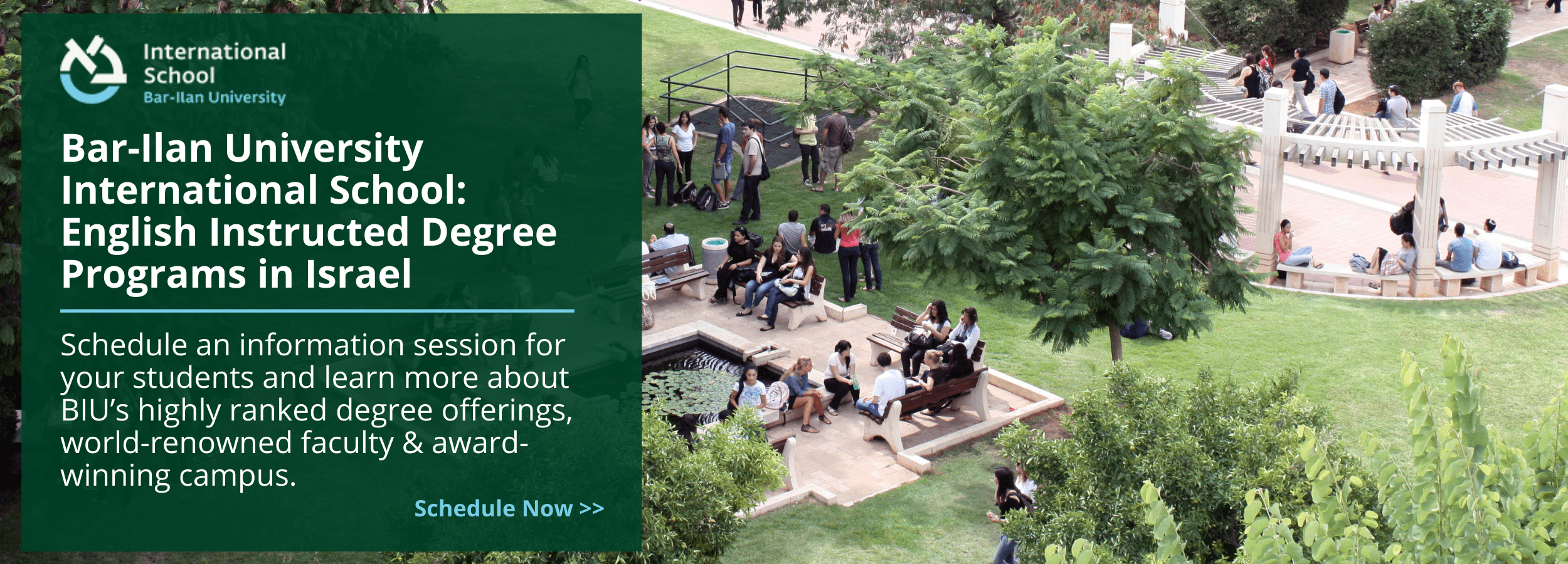The premise of “making” meaning in Jewish education sounds somewhat heretical, code for the claim that learning Torah faces an intrinsic handicap: “The words of the Torah,” goes the argument, “may be weighty, but they’re not quite so…relevant. Learning, analyzing, and assessing exercises the brain, but ignores or stultifies the soul. And it’s a real shame, because learning Torah is so important. If only it were more meaningful…”
This nearly axiomatic assertion highlights an under-discussed truth in the larger conversation about meaning-making: We view Torah study as deficient. Our subsequent attempts to overcome its shortcomings spawn an array of pedagogic questions: Since on its own it’s not meaningful, how, then, can we enrich the experience? What can I add to the equation that will catch student interest, feel worthwhile, life-impacting? How can I transform that which is not, into that which is? What will make this “meaningful?”
Unfortunately, we are asking the wrong questions. Seemingly innocent and certainly well-intentioned, these questions—with their underlying implication that studying Jewish text is not meaningful enough on its own—undermine Jewish learning at its core. Meaningfulness is not a bonus in Jewish education, it is the purpose. The central questions of the field, though, reinforce the assertion that our core texts don’t meet our core goals. If so, where have we gone wrong?
First, we accepted the viewpoint of our students. In response to generations of students proclaiming, “I’m not interested,” “this is boring,” “this is too difficult,” and “this doesn’t speak to me,” teachers exhibit traces of Stockholm Syndrome by adopting the same worldview: “Jewish text is somewhat removed from our world,” “it can be a little unexciting at times,” “it really is a challenge….” The questions we ask reveal this shift in mindset: “How do we make meaning?” accepts as self-evident that the meaning does not exist on its own. Words, as always, are important: “Relevance” has replaced “eternal;” “contemporary” substitutes for “timeless.”
Second—as a result—we bifurcated between skills work/text learning on the one hand, and soul work/meaningfulness on the other. A sampling of some of the many pedagogic strategies for making meaning highlights this dichotomy: Journal writing, God/theology conversations, questions designed to extract personal meaning, contemporary lessons, uplifting messages, and thematic learning, to name a few. Most strategies, unfortunately, adopt the viewpoint that Jewish text learning and meaning-making are in tension with each other. In that thinking, text study—be it Written or Oral Torah—is just a step on the path towards what is actually meaningful and more important. Learning Torah became the handmaiden to personal exploration.
These flawed developments in our approach to meaningful learning extend beyond the messages we send to our students. It is not just the preeminence of text study that we undermine, it is the meaning-making itself, for in making meaning, we often dilute it: Meaning becomes message, with the accompanying drive to derive moral or practical takeaways from each piece of learning. The unintended consequence: Suddenly divrei Torah on every parasha teach the same idea, whether it’s the centrality of Torah study and observance or the importance of treating others kindly, depending on where you find yourself in the stereotypical Jewish spectrum. Cliches abound; the Torah becomes a generic self-help book. As one student put it: “When your primary purpose for learning is to search for a deeper meaning, the learning is often surface-level and superficial.”
Third, we bought into contemporary definitions of meaningfulness. Grounded in the cultural focus on the self, inspiration became the metric by which meaningfulness is measured. The Torah needs to uplift me, not challenge me too much, and conform with what I already believe. The text, therefore, is “other” and to make it significant it needs to be more… “me”: “What does this specific text that I am learning right now say about the moment I find myself in?” “How do these words relate to me right here, right now?” These are important questions; they should be asked. But personalizing learning need not be an exercise in self-absorption. There certainly is a “me” in ”meaning,” but there is also God, nation, and community, all marginalized in our rush to create meaning.
All this, meaning-making has wrought. But it shouldn’t. As one student explained:
I reject that approach to learning because I don’t think everything needs to—or should—fit into our modern-day perspective or satisfy our strong tendency to search for answers. The whole learning experience doesn’t need to be a picture-perfect, meaning-making ordeal.
It is for these reasons that after seventeen years of teaching I no longer talk about meaning-making. In a reversal of the first step listed above, I don’t make meaning with my students; rather, together we engage in something meaningful. I don’t accept that Torah faces a meaningfulness handicap, and my students and I don’t need a separate step to find meaning, because the medium is the meaning. Do we derive lessons? Personalize? Yes. All of that is important. But the meaning is the act of learning itself, the immersion into our texts.
The question we should ask ourselves as Jewish educators is not “how do we make meaning,” but “how do we capitalize on the inherent meaningfulness of Jewish text study?” All teachers and most students involved in Jewish education recognize implicitly that the endeavor is important, that the texts have significance. How, then, do we make that significance explicit, and intrinsically meaningful in the moment?
The answers depend on creating a classroom environment in which the premise that Jewish text study is meaningful develops into an axiom felt by both teacher and students. That in walking through the doorway one enters a partnership dedicated towards meaningful acts, a partnership in which the student, teacher, and text all play vital roles. The following are two broad categories through which to think about the values that could define such a classroom:
Truth/Sanctity.
“Why does this matter?” asks a student. “This debate in the commentaries is interesting, but why is it important in the big picture? How does it change anything?” Often, there are substantive answers to provide for such questions. Sometimes, however, the answer is something like this: “Honestly, I don’t think this one matters so much in the long run. The ramifications are not significant enough that it really matters at all…unless you care about truth.” Truth matters. Many of our great medieval commentators speak of the religious obligation to discover the truth when studying Torah, so that learning, analyzing, and assessing are not merely intellectual gymnastics or even exciting puzzle-solving, but a meaningful quest. As one student explained: “It is meaningful because we translate each part and actually understand what it is saying as opposed to praying when I usually don’t understand a single word.”
That pursuit of truth can be in the context of understanding devar Hashem—the word of God—or in the context of comprehending the sacred text of our people, but in either formulation, the text is meaningful. If the text is meaningful, then engaging with it, learning it, being challenged and stumped by it is meaningful as well. If the text is a vehicle to sanctity, an encounter with the sacred, then truth—understanding it on its terms, not mine—matters. “How can we convince students that truth matters?” “How can our students make room in our partnerships for a fourth member—sanctity?” “How do we create learning environments in which each step of the process feels like part of a larger meaningful whole?” should be the questions occupying Jewish educators.
Connection
If conventional wisdom narrows the focus of meaningfulness to “me,” Jewish learning helps expand the lens to something larger than the individual. Hevruta learning, whole class discussion, and investigation of commentaries—our very modes of learning—proclaim to our students, “you can’t do this alone.” Nobody can master Jewish texts on their own. More importantly, nobody has to. Learning Torah is the vehicle of Jewish connection, not just to our peers, to our teachers, and to complete strangers, but to our ancestors.
As one student put it:
Learning Jewish text is intrinsically meaningful. It is meaningful to study texts that have been studied for generations upon generations and by my own family and people.
In the words of another:
It’s meaningful to me because it’s the history of the Jewish people. The fact that it’s a text that has been passed down for so long… is a part of being Jewish. When I’ve learned Talmud…I get to see how the Rabbis build off of each other. I find that the sense of community makes it meaningful.
Another student explains:
Learning Jewish texts is meaningful to me because it gives me an opportunity to connect with my ancestors … As I learn Torah, I get to learn more about the struggles and triumphs of my ancestors. It is meaningful to me because I get to know what my ancestors were thinking, feeling and what they did in their lives, and because of this I feel like I can connect with my history and religion on a deeper level.
“How can Jewish text become more than words on a page”’ is a question we should be asking. “How can we make learning feel as if Rashi is on one side of us and Rashbam on the other, that we are joining their family?” “How can I touch the Humash and feel a hyperlink to Moshe Rabbeinu?”
Learning Jewish text is a process, an immersion, a struggle. In a modern world focused on convenience, self, and packaged inspiration, such a process can feel oppressive, counter-intuitive, even pointless. Yet it is that step-by-step task which we as Jewish educators should lean into to discover meaning with our students. One formerly disenchanted student, who had viewed the study of Jewish text with frustration and distaste, as something that could only be done passively “waiting until their meaning and relevance appeared out of thin air” explains that the experience of learning in the environment described above changed everything:
…the part that I found so meaningful was indeed what infuriated—the absence of that magical, easy, direct path to discovery. It’s a process, and in a world and era where information is something that seldom needs seeking out, I believe it is a process that is sorely needed by all.
At the end of the day, the greatest tool in the challenge of meaningful Torah learning is the text itself. To maximize it, we need to ask different questions. We can begin by challenging the accepted wisdom that the most meaningful part of Jewish education is somehow separate from its most important part: text study. Indeed, those texts have the power to overcome modern emphasis on the self by linking Jews across the world and throughout time.
As one student eloquently stated:
By committing one’s self to learning Jewish text, one is inherently immersed into an ancient world of religious philosophy. The depth of analysis required to understand such a world astounds me. In today’s modern world, I find it amazing that such an old text has the power to enrich my life.






So beautifully written for all Tanakh educators of Today’s world. Thank You!!!